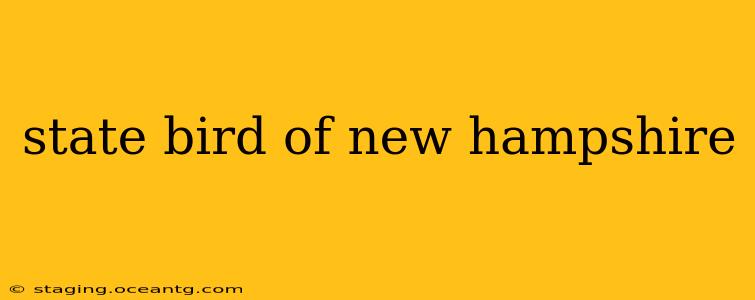New Hampshire, the Granite State, boasts a rich natural landscape, and its official state bird, the Purple Finch, perfectly embodies the state's vibrant beauty. This charming bird, with its striking plumage and melodious song, has captured the hearts of New Hampshire residents for generations. But what makes the Purple Finch so special, and what else should you know about this delightful avian resident? Let's dive in.
What is the State Bird of New Hampshire?
The Purple Finch ( Haemorhous purpureus) was officially designated the state bird of New Hampshire in 1957. Its selection reflects not only its visual appeal but also its widespread presence throughout the state. Unlike some state birds found only in specific regions, the Purple Finch is relatively common and easily spotted across various habitats in New Hampshire.
What Color is a Purple Finch?
While the name might suggest a deep purple hue, the male Purple Finch's coloring is more accurately described as a rich reddish-purple, particularly noticeable on its breast and head. Females, on the other hand, exhibit a more subdued plumage, predominantly brown with streaks. This subtle difference in coloration makes observing both males and females a rewarding experience for bird watchers.
Where Do Purple Finches Live?
Purple Finches are found throughout New Hampshire, inhabiting a range of environments, including forests, parks, and even backyards. They are particularly drawn to areas with coniferous trees, where they find ample food sources. During the breeding season, they prefer woodland habitats, while in winter, they may venture into more open areas in search of food.
What Do Purple Finches Eat?
These finches primarily have a vegetarian diet. Their favorite food sources include seeds from various trees, such as pine, spruce, and sunflower. They also consume buds and berries, supplementing their diet with insects during the breeding season to provide essential protein for their young.
What is the Song of a Purple Finch?
The Purple Finch is known for its pleasant and distinctive song, often described as a cheerful, warbling melody. It's a varied song, with different individuals displaying unique variations. Listening to their song is a delightful aspect of observing these birds in their natural habitat.
When is Purple Finch Breeding Season?
Purple Finch breeding season typically runs from April to July. During this time, males establish territories and engage in courtship displays to attract females. They build nests in coniferous trees, usually high up in the branches, to protect their eggs and young from predators.
Are Purple Finches Migratory?
Yes, Purple Finches are partially migratory. While some populations remain in New Hampshire year-round, many birds migrate south for the winter, seeking warmer climates and more abundant food sources. Their migratory patterns are influenced by weather conditions and the availability of food.
How Can I Attract Purple Finches to My Backyard?
If you'd like to attract Purple Finches to your backyard, providing a source of food and shelter is key. Planting coniferous trees or shrubs will naturally draw them in. Additionally, supplying bird feeders with sunflower seeds or niger seeds will significantly increase your chances of observing these beautiful birds up close. Offering fresh water in a bird bath is also beneficial.
The Purple Finch, with its vibrant colors, melodic song, and adaptability to various habitats, serves as a fitting symbol of New Hampshire's natural beauty and resilience. Understanding its characteristics, habitat preferences, and behaviors allows for greater appreciation of this magnificent state bird.
